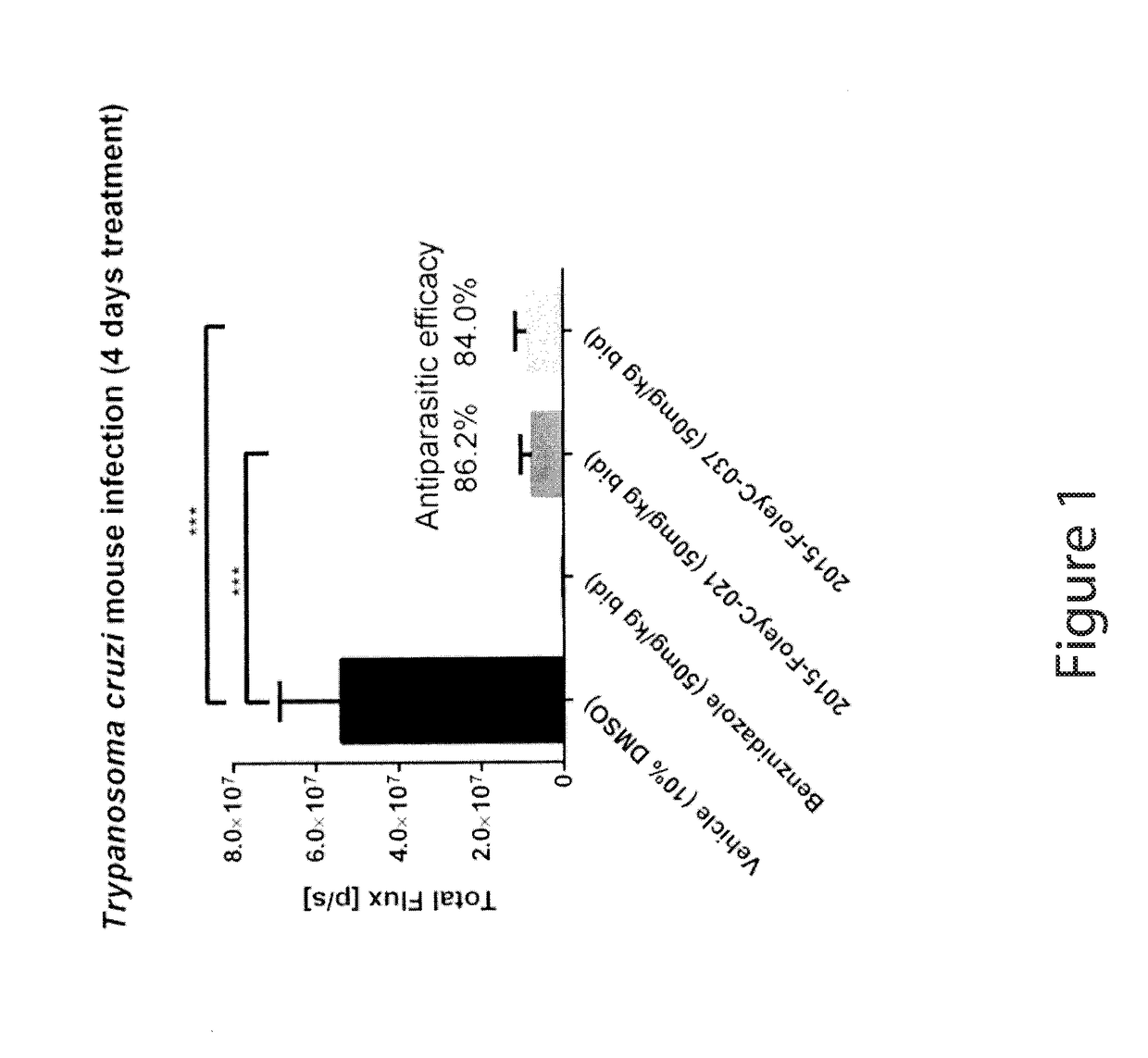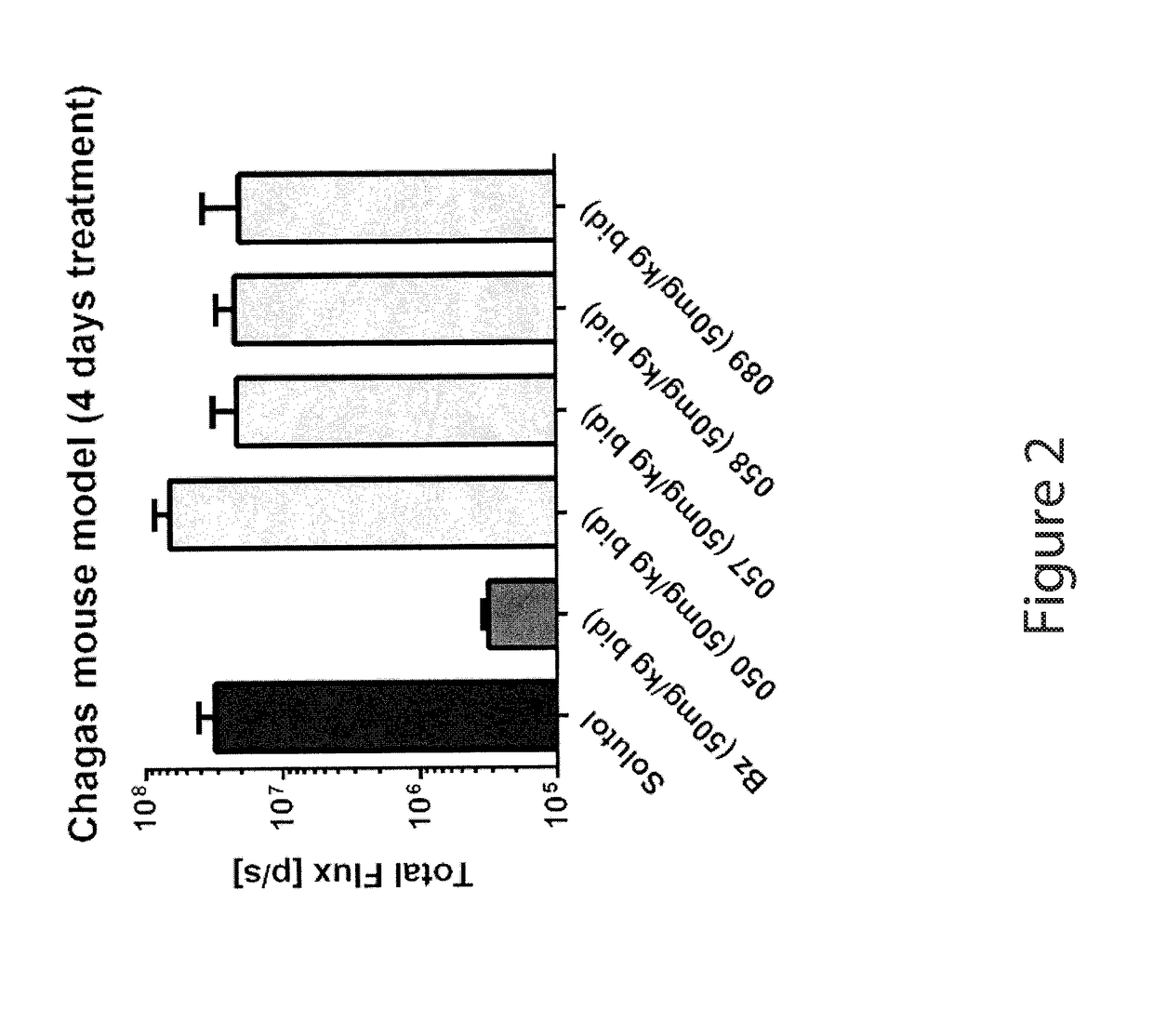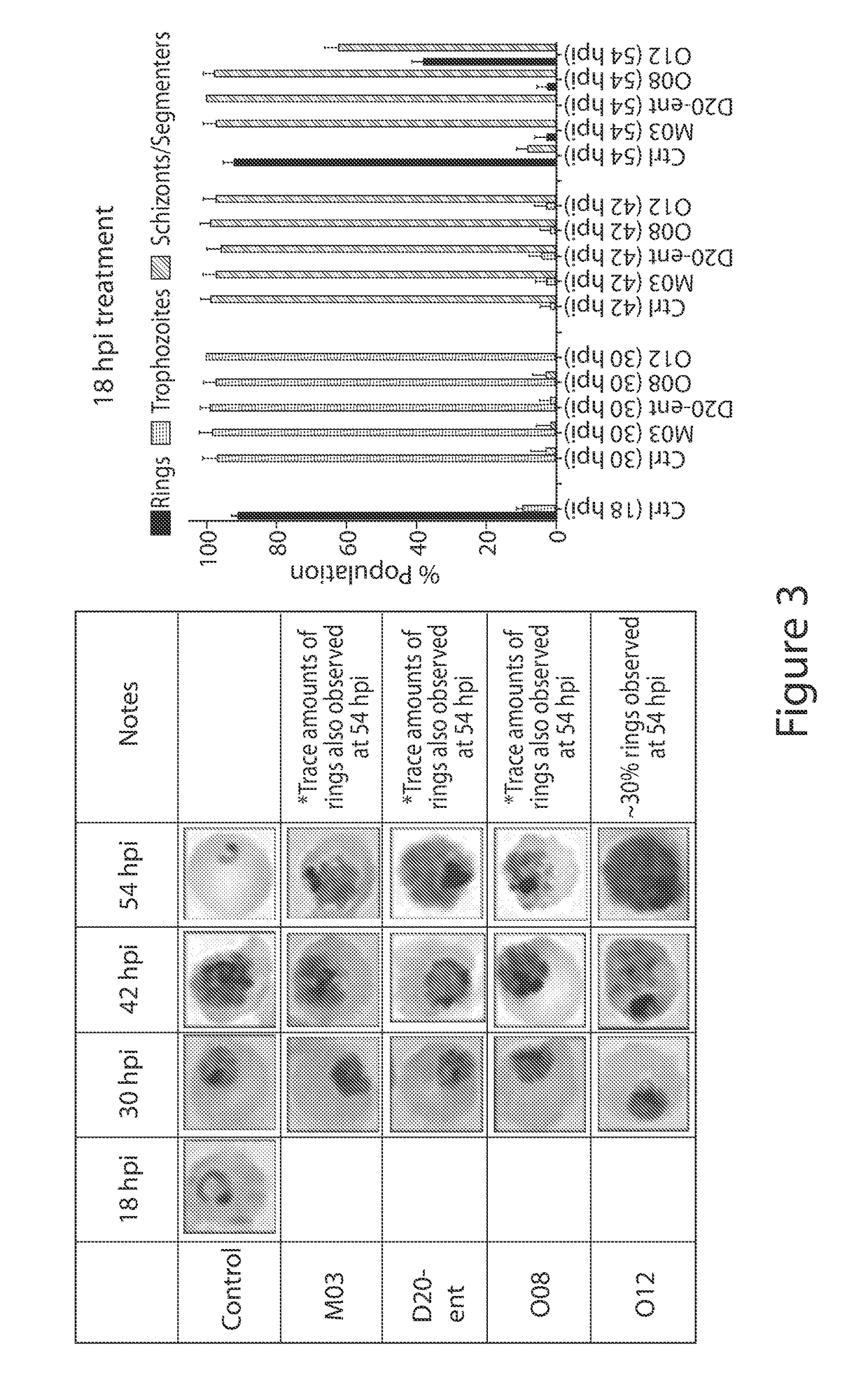Anti-parasitic compounds and uses thereof
a technology of antiparasitic compounds and compounds, applied in the field of antiparasitic compounds, can solve the problems of no fda-approved drugs currently available, 12,000 deaths per year, and two drugs currently used in latin america, nifurtimox and benznidazole, etc., to reduce or avoid symptoms, signs or causes of the condition, delay or minimize one or more symptoms associated, effect of improving overall therapy
- Summary
- Abstract
- Description
- Claims
- Application Information
AI Technical Summary
Benefits of technology
Problems solved by technology
Method used
Image
Examples
example 7
on of Compound 86 (R)—N—((R)-1-Benzylpyrrolidin-3-yl)-4-(3-bromophenyl)-3-(2-((tert-butyldiphenylsilyl)oxy)ethyl)-2-((R)-tert-butylsulfinyl)-2,3-dihydro-1H-pyrrolo[3,4-c]pyridine-6-carboxamide
[0301]
[0302]To a 10 mL roundbottom flask containing ethyl (R)-4-(3-bromophenyl)-3-(2-((tert-butyldiphenylsilyl)oxy)ethyl)-2-((R)-tert-butyl-sulfinyl)-2,3-dihydro-1H-pyrrolo[3,4-c]pyridine-6-carboxylate (24 mg, 0.0330 mmol, 1.0 equiv, azeotroped 3× with toluene) at room temperature was slowly added a pre-stirred (>2 h) stock solution of dimethylaluminum (R)-1-benzylpyrrolidin-3-amide4 (0.2 M solution in CH2Cl2 / toluene, 0.33 mL, 0.0660 mmol, 2.0 equiv). The mixture was stirred at room temperature for 20 h, then carefully quenched by addition of a few drops of MeOH followed by dilution with 1 mL of CH2Cl2 and careful addition of 1 mL saturated aqueous NaHCO3. The aqueous layer was extracted with EtOAc (1×5 mL), then the combined organic layers were dried (Na2SO4), filtered, and concentrated by rot...
example 8
on of Compound 85
1-(3-Bromophenyl)-5-((tert-butyldiphenylsilyl)oxy)pent-1-yn-3-ol
[0306]
[0307]In a 25 mL roundbottom flask, 1-bromo-3-ethynylbenzene (243 μL, 1.94 mmol, 1.1 equiv) was dissolved in 10 mL THF and cooled to −78° C. A solution of LiHMDS (1 M in THF, 1.9 mL, 1.85 mmol, 1.05 equiv) was added dropwise, then the mixture allow to warm to room temperature and stir for 15 min. The reaction was cooled again to −78° C. and a solution of 3-((tert-butyldiphenylsilyl)oxy)propanal (552 mg, 1.77 mmol, 1.0 equiv) in 1.8 mL THF was added by cannula. The reaction was allowed to warm to room temperature and was stirred for 12 hr. 10 mL saturated aqueous NH4Cl was added to quench the reaction, followed by 10 mL Et2O, then the aq layer was extracted with Et2O (3×10 mL). The combined organic extracts were washed with brine (1×10 mL), dried (MgSO4), filtered, and concentrated by rotary evaporation. Purification by silica flash chromatography (10-20% EtOAc / hexanes) yielded the propargyl alcoho...
example 9
on of Compound 49
3-(3-Bromophenyl)propiolaldehyde
[0323]
[0324]In a 250 mL roundbottom flask, 3-(3-bromophenyl)prop-2-yn-1-ol (1.54 g, 7.30 mmol, 1.0 equiv) was dissolved in 73 mL CH2Cl2. Dess-Martin periodinane (3.40 g, 8.03 mmol, 1.1 equiv) was added at room temperature and the mixture was stirred at 1 h. 50 mL sat aq NaHCO3 was added to quench the reaction and the layers separated. The aq layer was extracted with CH2Cl2 (2×50 mL), then the combined organic extracts were washed with brine (1×8 mL), dried (Na2SO4), filtered, and concentrated by rotary evaporation. Purification by silica flash chromatography (30% EtOAc / hexanes) yielded the propargyl aldehyde as a white solid (1.41 g, 93%). TLC: Rf0.79 (33% EtOAc / hexanes). 1H-NMR (600 MHz): δ 9.42 (s, 1H), 7.74 (t, J=1.7 Hz, 1H), 7.62 (ddd, J=8.1, 2.0, 1.0 Hz, 1H), 7.53 (dt, J=7.7, 1.2 Hz, 1H), 7.29 (t, J=7.9 Hz, 1H). 13C-NMR (151 MHz): δ 176.4, 135.6, 134.3, 131.7, 130.1, 122.4, 121.3, 92.6, 88.7.
[0325]3-(3-bromophenyl)prop-2-yn-1-ol ...
PUM
 Login to View More
Login to View More Abstract
Description
Claims
Application Information
 Login to View More
Login to View More - R&D
- Intellectual Property
- Life Sciences
- Materials
- Tech Scout
- Unparalleled Data Quality
- Higher Quality Content
- 60% Fewer Hallucinations
Browse by: Latest US Patents, China's latest patents, Technical Efficacy Thesaurus, Application Domain, Technology Topic, Popular Technical Reports.
© 2025 PatSnap. All rights reserved.Legal|Privacy policy|Modern Slavery Act Transparency Statement|Sitemap|About US| Contact US: help@patsnap.com



